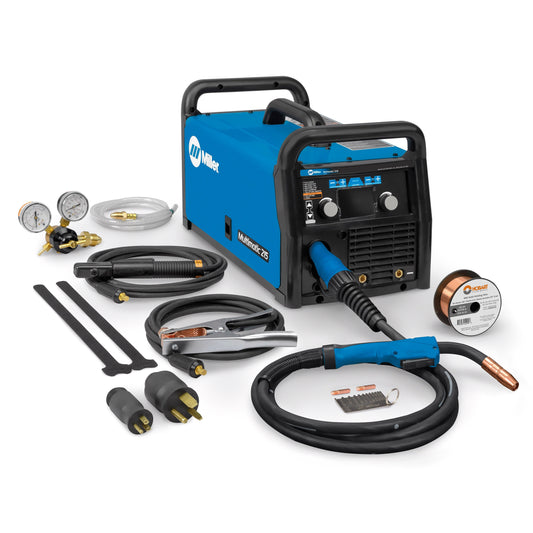MIG welders are great for welding a wide variety of metals, but one of the best uses for a MIG welder is welding aluminum. Aluminum is a thin metal where you need to control the amount of power you use while welding. MIG welders have specially adapted spool guns for MIG welding that feed the filler wire electrode directly into the torch. However, before you start buying a MIG welder and a matching spool gun, there are some things you need to know first.

Use Enough Power to Weld Aluminum
A solid weld penetrates deep into the metal and fuses the joint together, and therefore you need enough power to make sure you achieve proper penetration. A 230V MIG welder will give you enough power to penetrate the metal. Generally speaking, a 115V welder does not have enough power to melt through the aluminum and provide the proper fusion needed.
Use the Right Spool Gun to Weld Aluminum
Once you know what kind of machine you need to use, the next step is to match up your machine with the right sized spool gun. There are different torches and hook ups that you’ll need to consider based on your welding machine. The most important factor will be matching up your spool gun with the duty cycle of your MIG welder so that you don’t get stuck while working on an aluminum project.
Choose a Wire to Weld Aluminum
When you’re going to weld aluminum, you generally don’t need to think too hard about which MIG wire to use. Most professionals suggest using .030 or .035 in. diameter aluminum wire for aluminum welding projects.
Though 4043 is the most common wire alloy for aluminum MIG welding wires, you can choose between 4043 or 5356 wires. These types of wires can be used to weld the following types of aluminum: 3000, 4000, 5000 and 6000.
5356 tends to melt faster, requiring a faster wire speed and more skill to keep up with the rate at which the wire melts into the weld joint. 4043 is the best choice for DIY welders at home.
Store Your Wire Before Welding Aluminum
When exposed to the elements, aluminum MIG wire will oxidize. Don’t open up your MIG wire until you’re ready to load it into your spool gun. Oxidized spool wire can cause an erratic arc, resistance, soot, and affect the feeding speed of the MIG wire while welding.
MIG welding with aluminum can be a breeze with the right spool gun and feeder wire, making clean, smooth welds for automotive, farm, and other welding applications.



